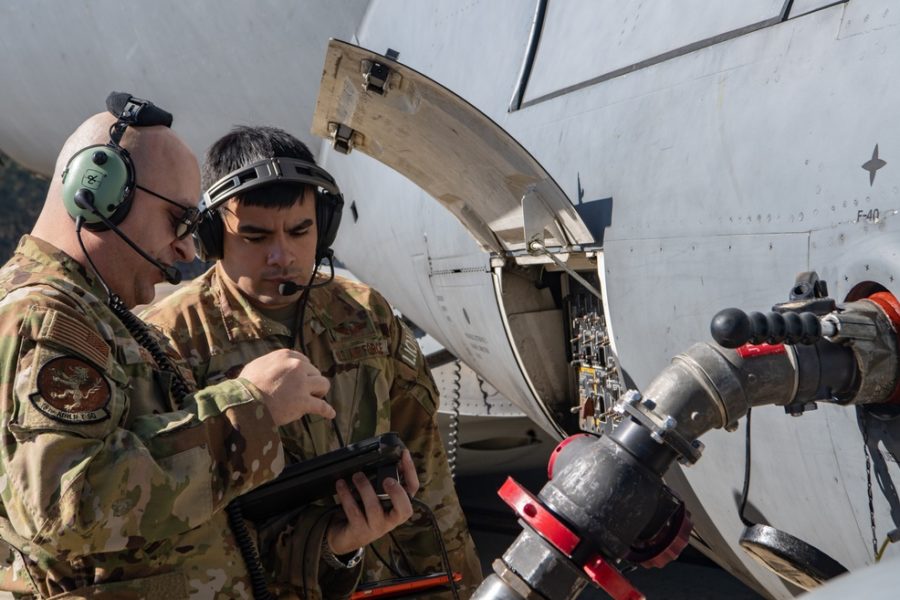The Air Force believes it can save up to $80 million per year and increase its mission effectiveness per gallon of fuel by up to three percent under a new pilot program announced Feb. 1.
The Mission Execution Excellence Program is aimed at more efficiently and effectively using fuel and will start by focusing on the C-17 Globemaster III, the Air Force’s largest fuel consumer, at Joint Base Charleston, S.C., and Travis Air Force Base, Calif. The pilot phase of the program will run through December 2022, before the program expands to other bases and aircraft.
MEEP will work with pilots, operations planners, maintainers, and logisticians to identify and encourage ways to minimize excess use of fuel, starting with six “key efficiency techniques” the department says will lower energy demand and increase readiness:
- More precise fuel planning, to decrease excess fuel carriage during planned flights;
- Reducing the number of engines running during taxi to only what is required for safe operation;
- Limiting the use of Auxiliary Power Units during ground operations and utilizing more efficient ground power equipment;
- Minimizing the time between engine start and takeoff by reducing engines running or starting the engine simultaneously;
- Employing continuous descent operations in a low-drag configuration, with minimal engine thrust;
- Flying at optimal cruise altitudes.
The Air Force identified these techniques after meeting with “a number of commercial airlines and freight and transport companies to see how they operate in the most efficient and effective way possible using 21st century tools,” Deputy Assistant Secretary of Air Force Operational Energy Roberto I. Guerrero said in a statement.
The Air Force’s initial estimates are that the service can improve what it calls “energy intensity” by three percent. That would increase efficiency, readiness, and capability, while also saving millions of dollars.
Many of these techniques, Guerrero added, are “low-hanging fruit that we simply need to fund and incentivize.”
Incentives, both financial and personal, are a key component of MEEP—there will be transfers of “operations and maintenance funds or funding of wing priority projects,” funding handed out in proportion to how much units save on energy, and awards and recognition to Airmen and units that “show increased energy-aware behavior.”
The program will also include data collection efforts and education and training initiatives within wings to encourage more energy-efficient practices.
The Defense Department is the federal government’s largest consumer of energy, and the Air Force is the DOD’s largest consumer, making it the most energy-hungry agency in the government. Annually, the Air Force uses roughly 2 billion gallons of fuel, spending billions of dollars to fly planes and power bases.
Looking to improve their efficiency, both the Pentagon and the Air Force have taken steps in the past several months to address their fuel use—the Air Force partnered with carbon transformation company Twelve in 2020 for a pilot program to demonstrate technology that can convert carbon dioxide into viable aviation fuel, and the DOD has released reports calling climate change a national security issue and tying the issue to infrastructure and readiness.
